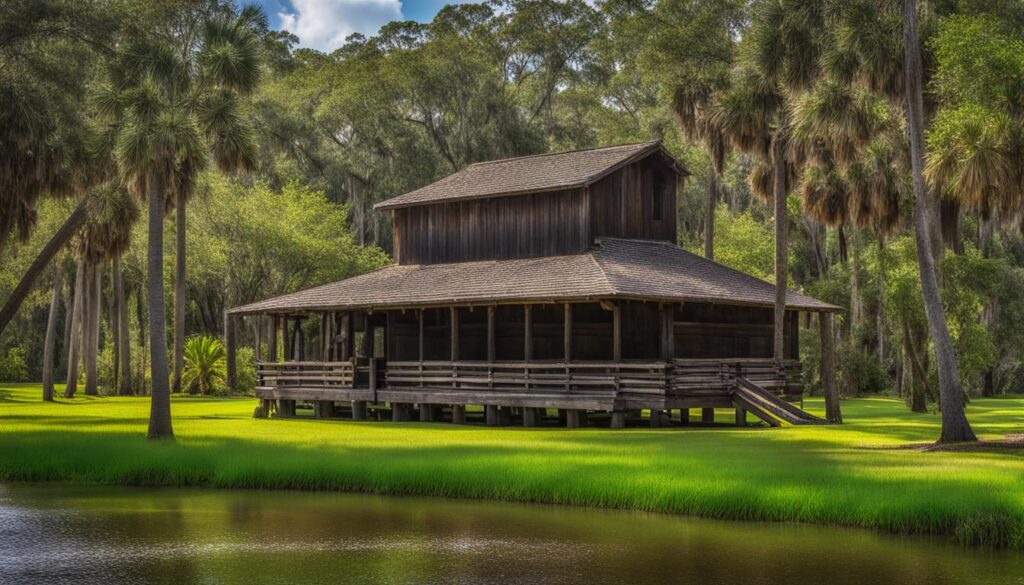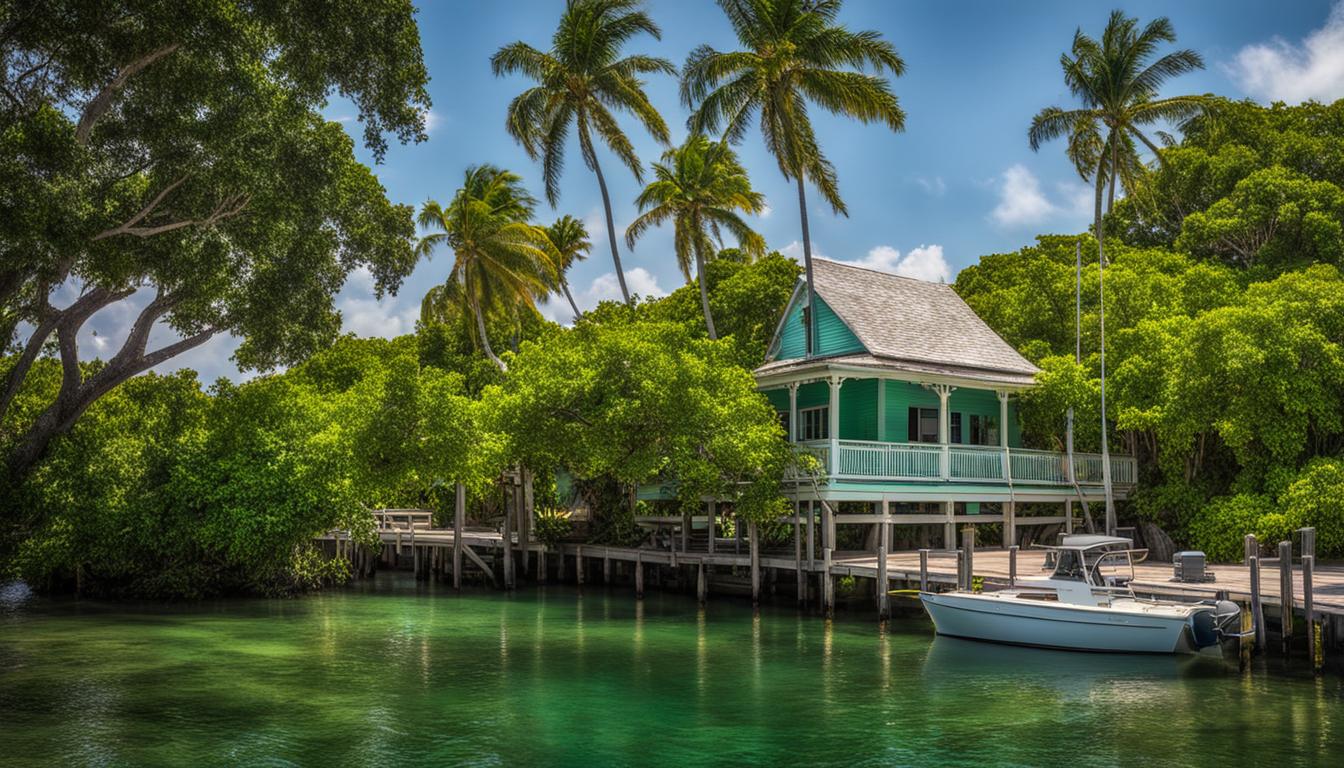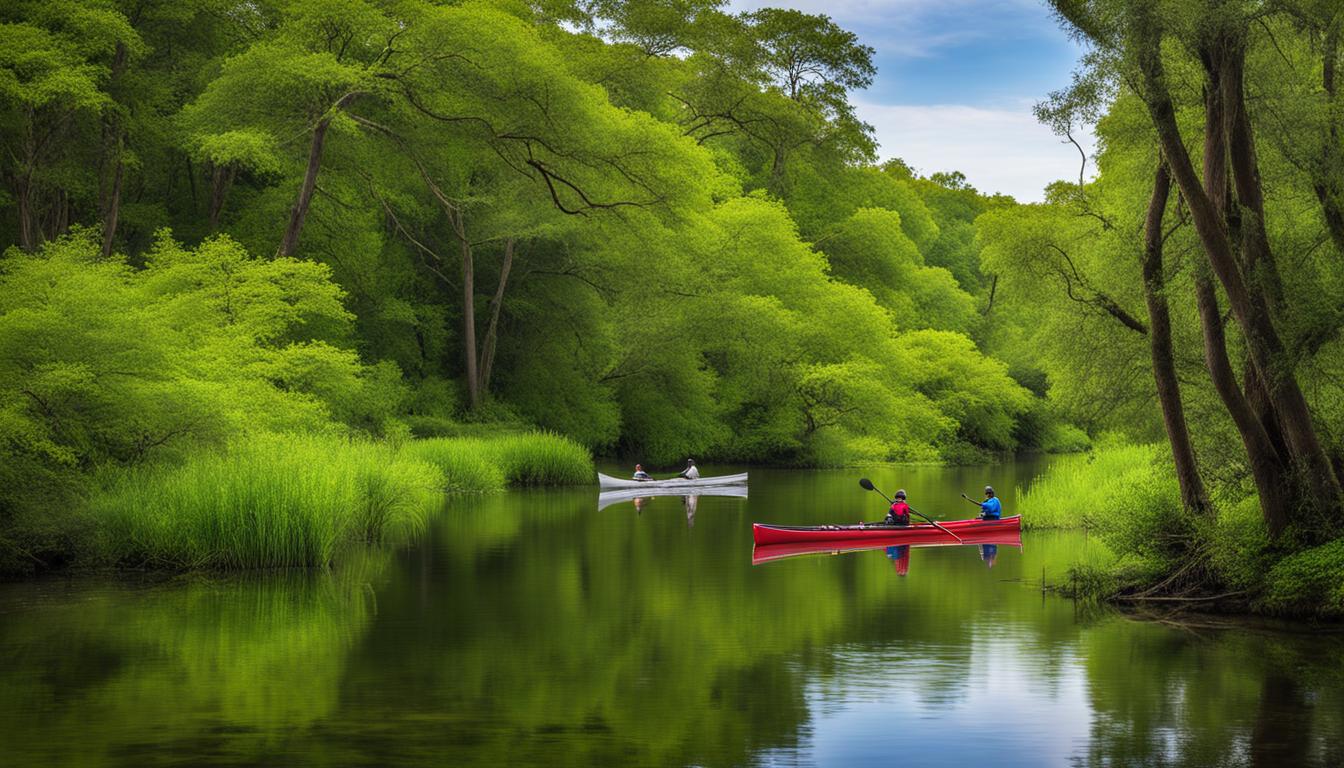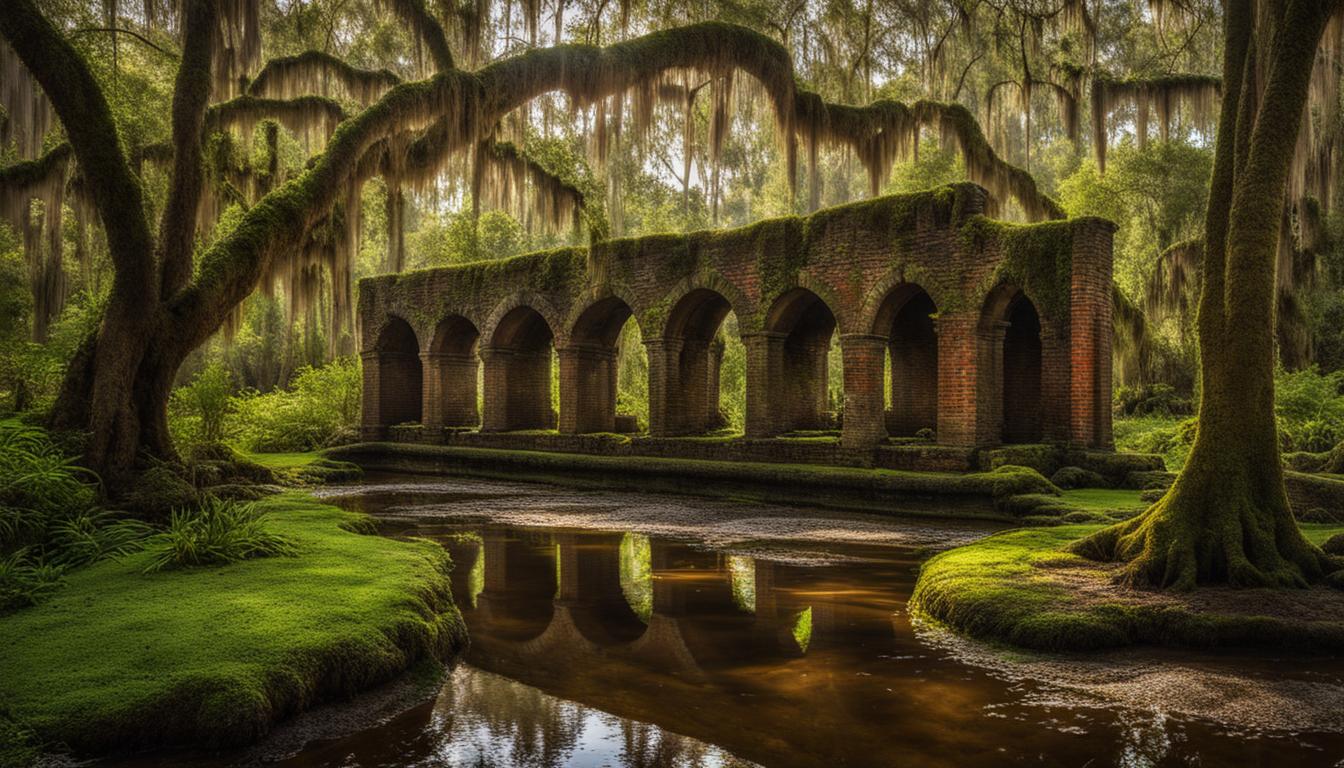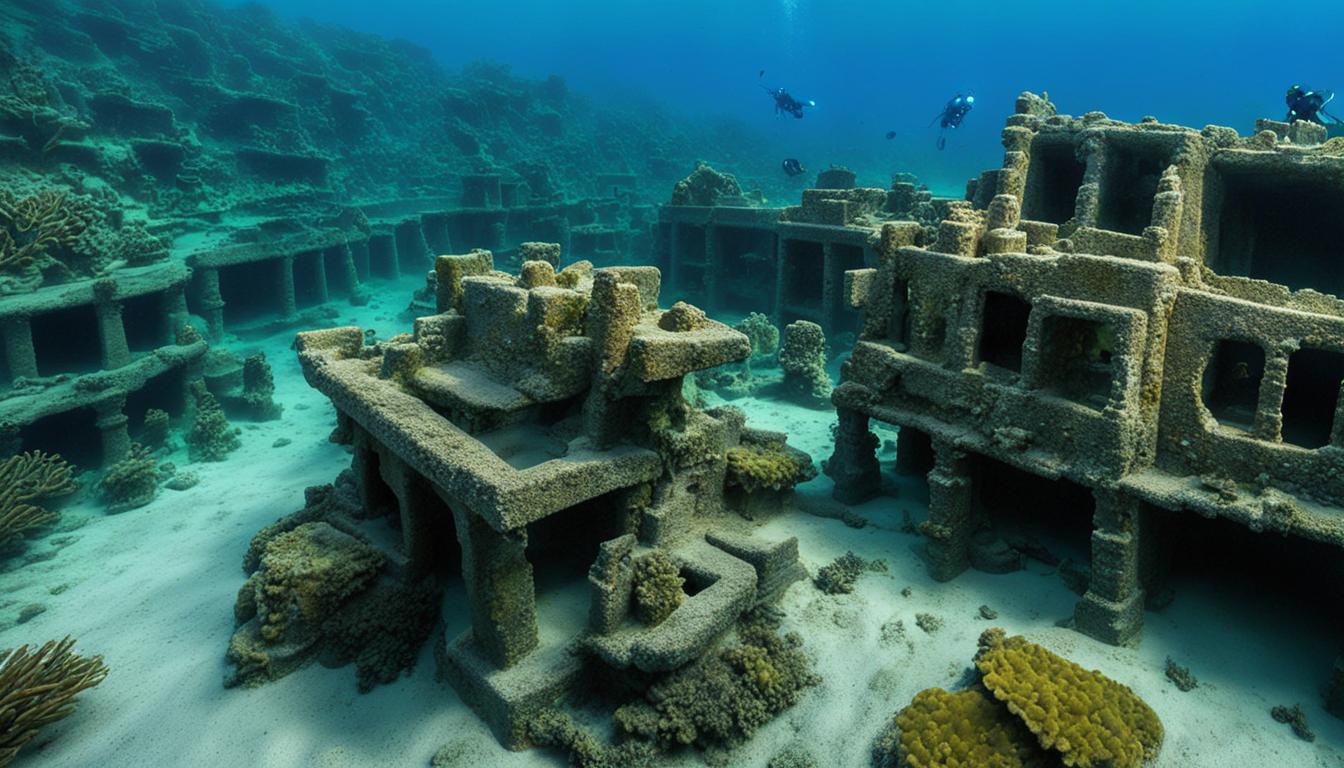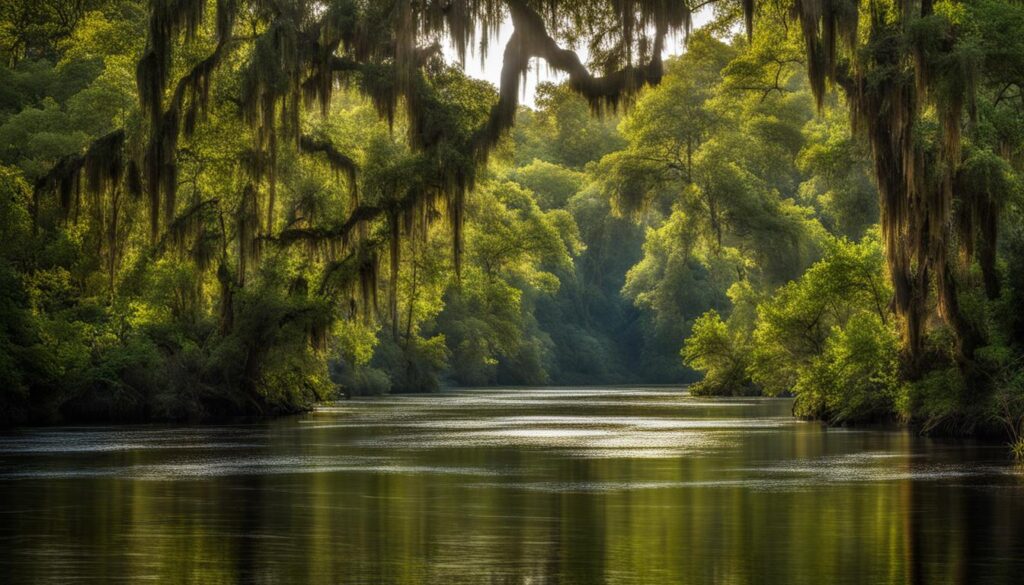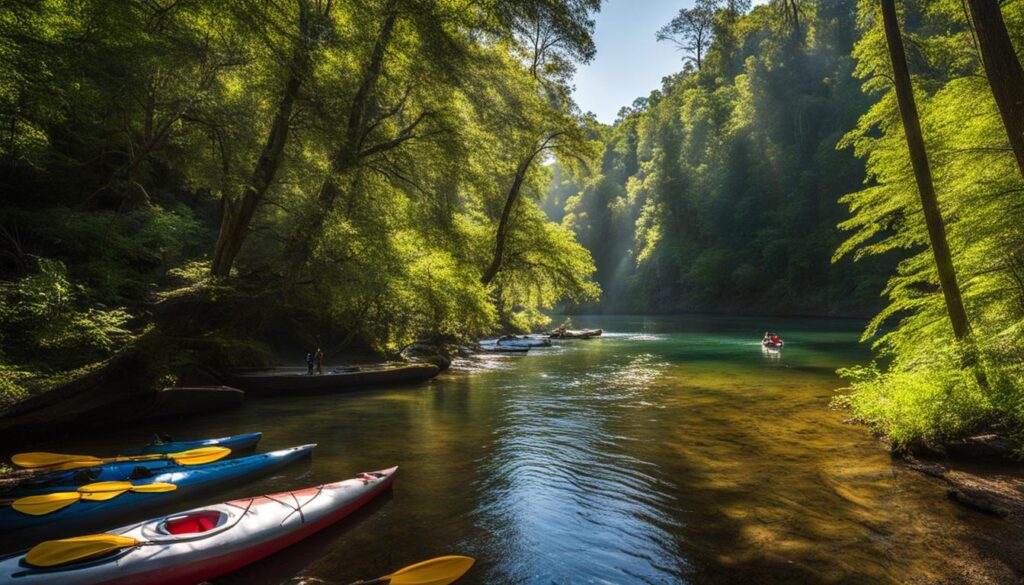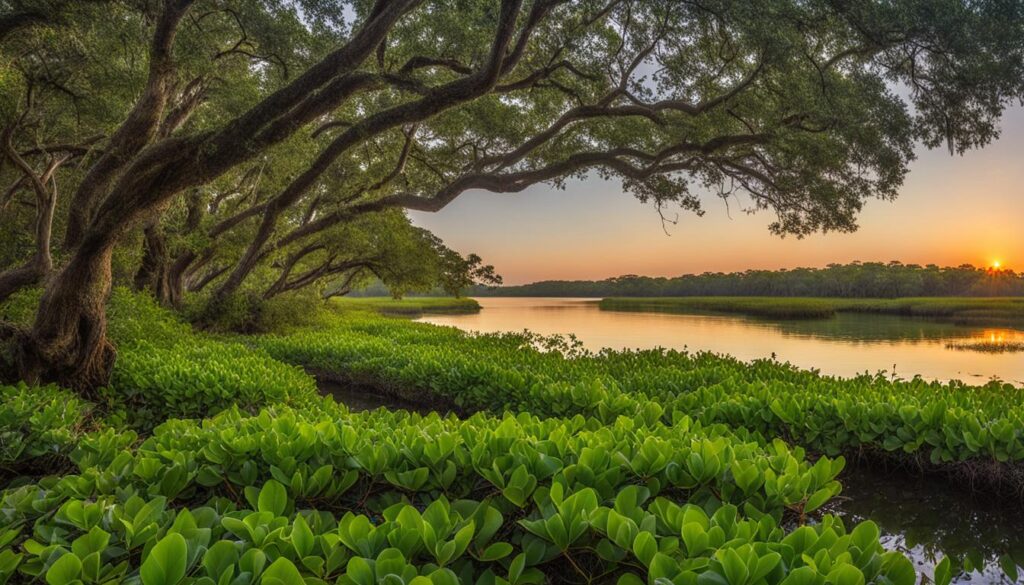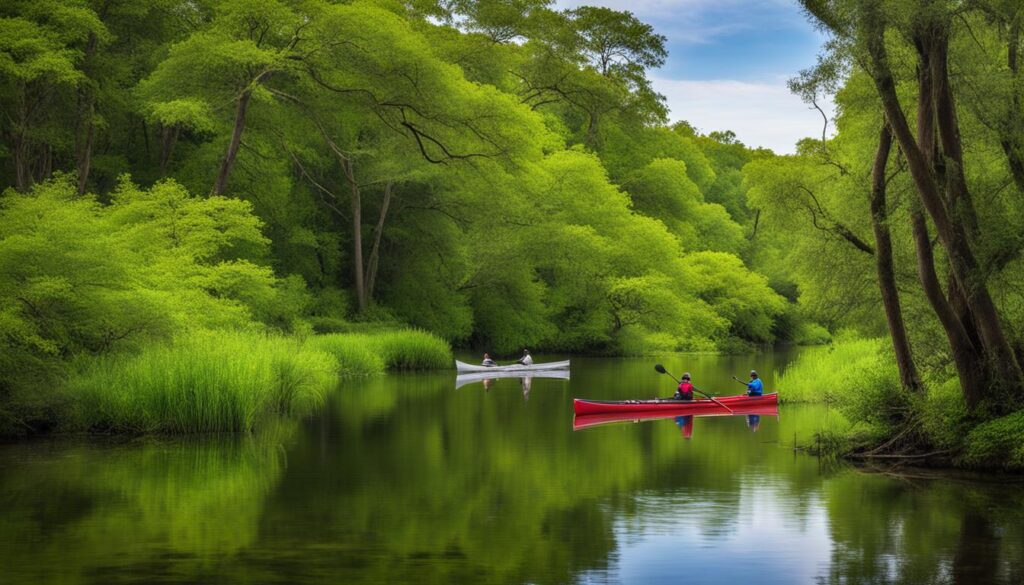Experience the rich history of Florida at Fort Foster State Historic Site, one of the most significant historical landmarks in the state. Located within Hillsborough River State Park, this fascinating site offers a glimpse into the past with its well-preserved fort and immersive living-history demonstrations. Discover the history of Fort Foster and delve into the stories of the pioneers and Seminole nation that shaped the region.
Key Takeaways:
- Fort Foster State Historic Site is a must-visit historical landmark in Florida.
- Located within Hillsborough River State Park, the site offers living-history demonstrations and annual events.
- Visitors should be cautious of the rough terrain and uneven floors at the fort.
- The Interpretive Center provides insight into the conflict between the Seminole nation and the U.S. military.
- Hillsborough River State Park offers camping facilities and recreational activities for visitors.
Contents
- 1 Essential Information about Fort Foster State Historic Site
- 2 Exploring Fort Foster State Historic Site
- 3 Services and Facilities at Fort Foster State Historic Site
- 4 Park History of Fort Foster State Historic Site
- 5 Planning Your Visit to Fort Foster State Historic Site
- 6 Nearby Parks and Trails to Explore
- 7 Conclusion
- 8 FAQ
- 9 Source Links
Essential Information about Fort Foster State Historic Site
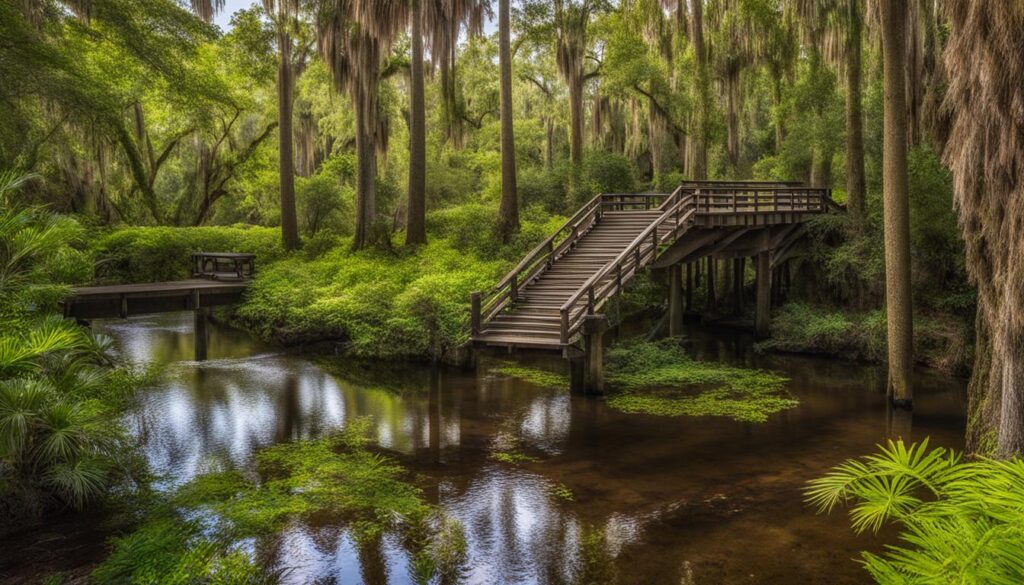
When planning a visit to Fort Foster State Historic Site, there are a few important details to keep in mind. As a fort designed for war during the Second Seminole War, the site does not meet modern safety standards. Visitors should exercise caution due to rough terrain, uneven floors, and blockhouse stairs. However, these features add to the authenticity and historical significance of the site.
The fort can be explored through guided tours and living-history demonstrations, providing visitors with a unique and immersive experience. Guides share fascinating insights into the fort’s role during the war and its historical context. Visitors can learn about the conflicts between the Seminole nation and the U.S. military, gaining a deeper understanding of Florida’s early pioneer history.
In addition to the fort itself, Fort Foster State Historic Site features an Interpretive Center. This center houses over 100 artifacts from the time period and provides a wealth of information about the Second Seminole War. It offers a comprehensive look at the conflict and the fort’s significance within that historical context. The center is open daily from 9 a.m. to 4 p.m., offering further opportunities for learning and exploration.
To ensure a safe and enjoyable visit, visitors should be aware of the historical nature of the site and come prepared with appropriate footwear and attire. Fort Foster State Historic Site is a remarkable destination for history enthusiasts, outdoor adventurers, and anyone interested in Florida’s rich past.
Table: Park Highlights
| Activities | Accommodations |
|---|---|
| Guided tours and living-history demonstrations | Hillsborough River State Park campsites |
| Exploring the full-scale reconstruction of the fort | Nearby accommodation options |
| Visiting the Interpretive Center |
Exploring Fort Foster State Historic Site

Visiting Fort Foster State Historic Site is an opportunity to delve into the rich history of Florida and experience the clashes between pioneers and the Seminole nation. This immersive tour takes you through a full-scale reconstruction of the fortress, allowing you to step back in time and witness the challenges faced by soldiers during the Second Seminole War. The site also features the iconic bridge beyond the fort’s gates, adding to the authenticity of the experience.
Aside from the fort itself, there are plenty of other outdoor activities to enjoy at Fort Foster State Historic Site. The site hosts the Fort Foster Rendezvous, an annual event where re-enactors bring the past to life, creating a living history atmosphere. Additionally, the Fort Foster Interpretive Center provides valuable insights into the Second Seminole War and the historical significance of the fort grounds.
For those interested in fort tours in Florida and seeking outdoor activities in Tampa, a visit to Fort Foster State Historic Site is a must. Whether you are a history enthusiast or simply looking to explore the beautiful natural surroundings, this site offers a unique and educational experience. Immerse yourself in the pioneer history of Florida and gain a deeper understanding of the struggles faced by early settlers and the Seminole people.
Outdoor Activities in Tampa
- Exploring the scenic trails at Hillsborough River State Park
- Picnicking in the designated picnic areas
- Experience the thrill of rapids on the Hillsborough River
- Discover nearby parks such as Lower Hillsborough Wilderness Preserve, Morris Bridge Park, Trout Creek Park, and Cypress Creek Nature Preserve
Services and Facilities at Fort Foster State Historic Site

When visiting Fort Foster State Historic Site, visitors should note that camping facilities are not available directly at the site. However, Hillsborough River State Park, where Fort Foster is located, offers camping opportunities. Visitors can choose to stay at one of the park’s campsites or explore nearby accommodation options for their stay.
As for services and facilities, Hillsborough River State Park provides various amenities to enhance visitors’ experience. Restrooms are conveniently located throughout the park for visitors’ convenience. There are also picnic areas where visitors can enjoy a meal surrounded by nature.
Additionally, Hillsborough River State Park offers a range of recreational activities for visitors to enjoy. Whether it’s hiking the park’s scenic trails, kayaking or canoeing along the Hillsborough River, or simply taking in the beauty of the surrounding nature, there are plenty of outdoor adventures to be had.
Before planning a visit to Fort Foster State Historic Site, it is important to check with the park for any specific guidelines or restrictions that may be in place. This will ensure that visitors have the most enjoyable and hassle-free experience possible.
Services and Facilities Summary:
- Camping facilities are not available directly at Fort Foster State Historic Site.
- Visitors can choose to stay at Hillsborough River State Park’s campsites or nearby accommodation options.
- Restrooms and picnic areas are available throughout Hillsborough River State Park.
- Recreational activities, such as hiking and kayaking, are offered at the park.
- Check with the park for any specific guidelines or restrictions before visiting.
By providing these services and facilities, Fort Foster State Historic Site and Hillsborough River State Park aim to ensure that visitors have a comfortable and enjoyable experience while exploring the historical significance of the site.
Park History of Fort Foster State Historic Site
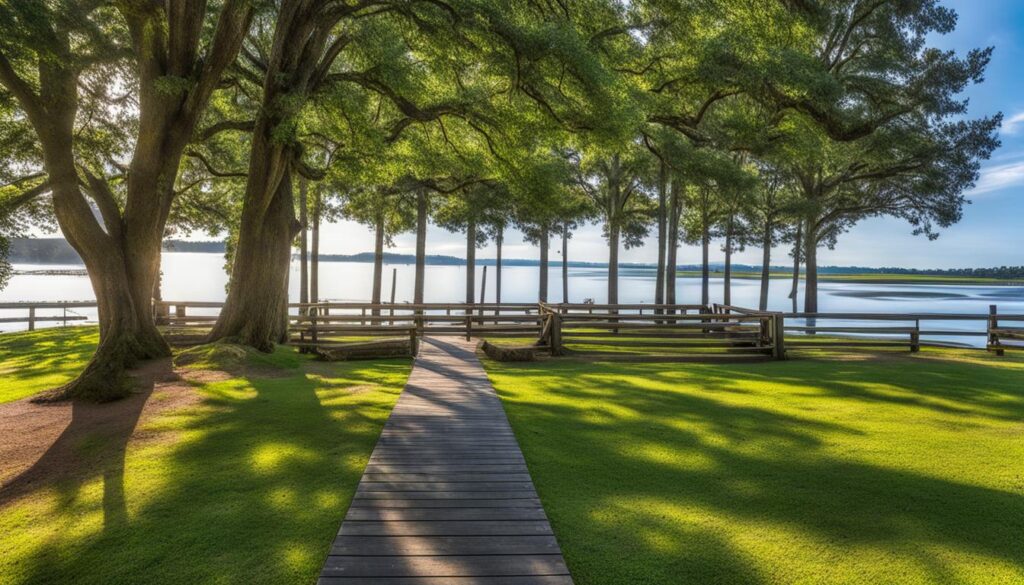
Fort Foster State Historic Site has a rich history that dates back to the Second Seminole War. The fort was originally built in December 1836 under the direction of Lt. Col. William S. Foster. Its primary goal was to protect the bridge crossing and serve as a resupply point. Throughout its history, the fort went through periods of activation and abandonment due to disease and Seminole activity. Today, the site stands as a replica constructed by the Florida State Park system.
During the Second Seminole War, Fort Foster played a critical role in maintaining control over the Hillsborough River crossing. It was strategically positioned to defend the bridge and prevent Seminole attacks on American settlements. The fort witnessed several conflicts and engagements during the war, including the famous Battle of Okeechobee. Following the war, the fort was intermittently used by the U.S. Army before eventually being decommissioned.
“Fort Foster State Historic Site provides visitors with a unique opportunity to step back in time and experience the challenges and triumphs of early Florida pioneers and soldiers. The reconstructed fort allows visitors to gain a deeper understanding of the struggles faced during the Second Seminole War and honors the historical significance of Fort Foster.” – Fort Foster State Historic Site
Fort Foster Historical Timeline
| Date | Event |
|---|---|
| 1836 | Construction of Fort Foster begins |
| 1837 | Involvement in the Battle of Okeechobee |
| 1842 | Fort Foster abandoned by the U.S. Army |
| 1959 | Fort Foster reconstructed by the Florida State Park system |
The historical timeline of Fort Foster showcases its importance during the Second Seminole War and its subsequent preservation as a historic site. Today, visitors can explore the reconstructed fort, participate in living-history demonstrations, and gain insight into the challenges faced by pioneers and soldiers during this significant period in Florida’s history.
Planning Your Visit to Fort Foster State Historic Site
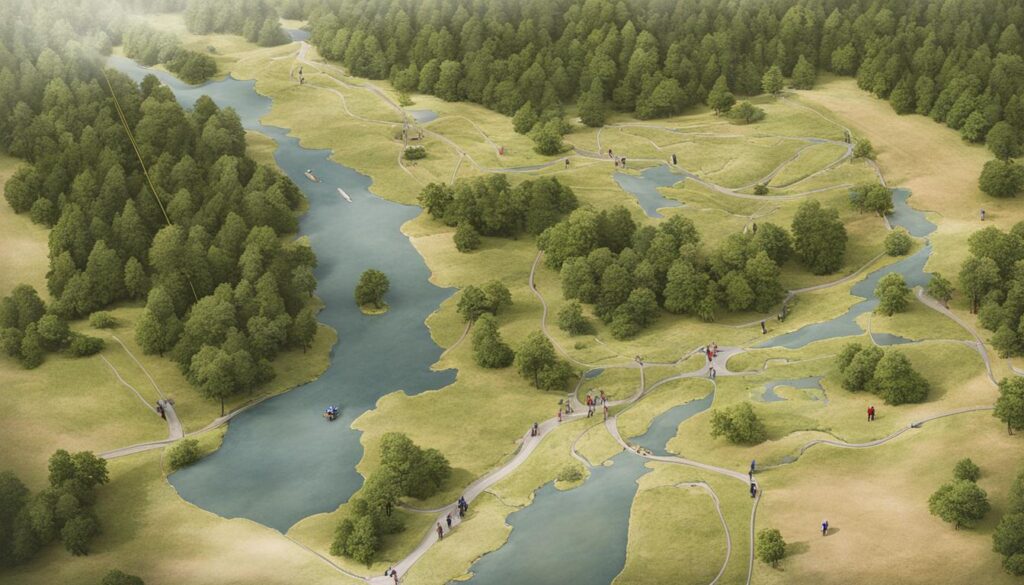
When planning a trip to Florida, visiting historical sites is a must, and Fort Foster State Historic Site should be at the top of your list. Located within Hillsborough River State Park, this site offers a unique opportunity to step back in time and explore the rich history of the area. Whether you’re a history enthusiast or simply looking for things to do in Tampa, a visit to Fort Foster is sure to be a memorable experience.
To make the most of your visit, it’s important to plan ahead. Guided tours and special events are held on specific weekends, so be sure to check the availability before your trip. The site is open only during these designated times, and tours are conducted out of Hillsborough River State Park. To get there, you can take Interstate 75 to Tampa exit 265 (Fowler Avenue) and head east to US 301. The park entrance is approximately 10.5 miles north of the junction. Parking Area #1 is where you’ll find the Fort Foster Interpretive Center, which is a great starting point for your visit.
During your time at Fort Foster, you’ll have the opportunity to explore the reconstructed fort, walk across the bridge, and immerse yourself in the history of the Second Seminole War. The site also hosts living-history demonstrations and annual events that bring the past to life. Take the time to visit the Interpretive Center, which houses over 100 artifacts and provides further insights into the conflicts between the Seminole nation and the U.S. military.
While planning your trip, keep in mind that Fort Foster was designed for war and does not meet modern safety standards. Be cautious of rough terrain, uneven floors, and blockhouse stairs. It’s important to wear comfortable shoes and be prepared for some physical activity during your visit. However, the experience is well worth it, as you’ll have the opportunity to step back in time and gain a deeper understanding of Florida’s fascinating history.
Things to Do in Tampa
- Visit other historical sites in the area, such as the Tampa Bay History Center and the Henry B. Plant Museum.
- Explore the vibrant arts and culture scene in downtown Tampa, including the Tampa Museum of Art.
- Enjoy outdoor activities along the Tampa Riverwalk, which offers beautiful views and access to parks, restaurants, and shops.
- Experience the thrill of attending a Tampa Bay Buccaneers football game or a Tampa Bay Lightning hockey game.
- Indulge in delicious cuisine at the many restaurants and food markets throughout the city.
With its rich history, vibrant culture, and diverse range of activities, Tampa is a destination that offers something for everyone. Whether you’re interested in exploring historical sites, enjoying outdoor adventures, or simply relaxing by the beach, a visit to Fort Foster State Historic Site is the perfect addition to your Tampa itinerary. Don’t miss out on this unique opportunity to delve into Florida’s past and create lasting memories.
Nearby Parks and Trails to Explore
A visit to Fort Foster State Historic Site presents an excellent opportunity to explore the surrounding parks and trails in Florida. Located within Hillsborough River State Park, visitors can take advantage of the additional recreational activities available in the area. The park offers a variety of scenic trails that wind through beautiful landscapes, providing ample opportunities for hiking, nature walks, and bird watching. One of the highlights is the chance to experience the rapids of the Hillsborough River, a thrilling adventure for outdoor enthusiasts.
Aside from Hillsborough River State Park, there are several other nearby parks that are worth exploring. The Lower Hillsborough Wilderness Preserve is a vast natural area that offers a serene escape from the hustle and bustle of city life. With its diverse ecosystems and abundant wildlife, it is an ideal location for nature lovers and photographers seeking picturesque views.
For those looking for more outdoor adventures, Morris Bridge Park, Trout Creek Park, and Cypress Creek Nature Preserve are excellent choices. These parks provide opportunities for fishing, kayaking, canoeing, and picnicking, allowing visitors to immerse themselves in the beauty of Florida’s natural landscapes.
Conclusion
Fort Foster State Historic Site offers a captivating journey through Florida’s past, bringing to life the stories of pioneers and their encounters with the Seminole nation. With its living-history demonstrations, educational experiences, and a reconstructed fort to explore, the site provides a unique opportunity to step back in time and immerse oneself in the rich history of the region.
For those seeking more outdoor adventures, nearby parks such as Hillsborough River State Park, Lower Hillsborough Wilderness Preserve, Morris Bridge Park, Trout Creek Park, and Cypress Creek Nature Preserve offer a wealth of opportunities to appreciate the diverse ecosystems and natural beauty of Florida.
When planning a visit, it is advisable to check the availability of guided tours and events at Fort Foster State Historic Site. Remember that the fort does not meet modern safety standards, so caution should be exercised while navigating the rough terrain and uneven floors.
To learn more about Fort Foster State Historic Site and other local attractions in Florida, visit the official website of the Florida State Parks. There, you’ll find additional resources to help you make the most of your visit and explore the fascinating history and natural wonders of the Sunshine State.
FAQ
What is the history of Fort Foster State Historic Site?
Fort Foster was originally built during the Second Seminole War as a defense point and resupply hub. It played a crucial role in protecting the bridge crossing at the Hillsborough River.
What should I be cautious of when visiting Fort Foster State Historic Site?
Visitors should be cautious of rough terrain, uneven floors, and blockhouse stairs as the fort was designed for war and does not meet modern safety standards.
What can I explore at Fort Foster State Historic Site?
Visitors can explore the full-scale reconstruction of the fortress, the bridge beyond the fort’s gates, and the Interpretive Center that houses over 100 artifacts.
Does Fort Foster State Historic Site offer camping facilities?
While Fort Foster itself does not offer camping facilities, it is part of Hillsborough River State Park, which provides camping opportunities.
How can I get to Fort Foster State Historic Site?
Visitors can take Interstate 75 to Tampa exit 265 (Fowler Avenue) and head east to US 301. The park entrance is approximately 10.5 miles north of the junction.
What other parks can I explore near Fort Foster State Historic Site?
Nearby parks worth exploring include the Lower Hillsborough Wilderness Preserve, Morris Bridge Park, Trout Creek Park, and Cypress Creek Nature Preserve.
Source Links
- https://www.floridastateparks.org/parks-and-trails/fort-foster-state-historic-site
- https://www.trailoffloridasindianheritage.org/fort-foster/
- https://floridahikes.com/fort-foster-state-historic-site
Check out these other Florida State Parks:
Check out our other Florida guides to find parks in Central Florida near locations like Anna Maria Island, Bradenton, Clearwater, Cocoa Beach, Davenport, Daytona Beach, Disney World, Dunedin, Kissimmee, Lake Mary, Lakeland, Leesburg, Ocala, Orlando, Sarasota, St Petersburg, Tampa, Universal Studios Orlando, and Venice. Or North Florida parks near Cedar Key, Gainesville, Jacksonville, Lake City, Palatka, and St Augustine.
We have guides for South Florida locations near Cape Coral, Fort Lauderdale, Fort Myers, Key West, Miami, Naples, Pompano Beach, Punta Gorda, Sanibel Island, Stuart, Vero Beach, and West Palm Beach. If you're looking for parks in the Florida panhandle, there are parks near Destin, Fort Walton Beach, Marianna, Mexico Beach, Panama City, Pensacola, and Tallahassee. There are also plenty of Florida parks near Crystal River, Deland, Homosassa, Silver Springs, and Zephyrhills.
